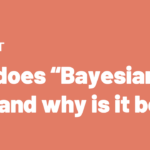Negative Underwear is a women’s underwear company that believes all women should feel confident and comfortable in their own skin. They offer a wide range of sizes and styles, and they use inclusive marketing campaigns to feature a diverse range of models.
The Problem: Attribution with In-Platform Metrics
As a new Marketing Leader, Evan Maridou (CMO at Negative) needed to understand true incrementality across his existing channels and quickly determine if new experimental channels could work and scale. He knew how much Negative spent on ads and how much revenue they received from new customers so he had an overall idea of ROAS, but he wanted more granular information per channel to help him allocate spend:
- Which channels were contributing more than others?
- Which new channels were cannibalizing existing ones?
- Which channels were targeting customers they would have gotten anyways?
Evan also knew that trusting in-platform attribution metrics wasn’t going to work. When he added together all of his in-platform attribution metrics, he found that they added up to 2.5x actual sales! This meant that multiple channels were taking credit for the same new customers, but the team at Negative didn’t know which. This doesn’t mean that any one of the channels were lying about their attribution, but none were measuring incrementality.
It was not clear which channels were actually driving new customers and Evan didn’t want to spend a fortune trying to figure it out.
“In marketing you can allow attribution to be as big of a problem and as big of an investment as you want it to be. That is not to say it is not important, but there is diminishing returns from trying all these methodologies and comparing what Google last click said vs. what a catalog vendor said the match back was.” – Evan Maridou, Negative Underwear CMO
In addition, Negative is and has always been a bootstrapped business, so the constraint Evan was given was that ads had to be “first purchase breakeven”. This meant no payback period of any kind — new customers could generate 0 dollars of contribution margin, but not negative contribution margin. Driving growth and moving fast while meeting this incredibly high bar for spend efficiency meant that Evan needed a robust way to measure incrementality that wouldn’t slow him down.
The Solution: Verifiable Incrementality with Recast
Evan selected Recast to solve his marketing measurement problem. Recast developed a predictive model built on Negative’s daily spend per channel that showed which channels had high incrementality – that is, which channels, if invested in further, would generate the highest possible return for Evan and Negative. Instead of adding up to 250% of actual sales like the in-platform metrics, Recast’s model added up to exactly 100% of revenue and included organic sales (the revenue that Negative would obtain without any paid media spend). Evan finally had a measurement source of truth he could trust.
“With Recast we can see exactly how many customers came from each channel and how many more customers we could get if we increased spend per channel.” Evan Maridou, Negative Underwear CMO
Recast also looks backwards as well as forwards. Historical spend data used in the initial model build will paint a picture of what has happened over the past 2 years. This opened the Negative team’s eyes to the impact of seasonality on their business and challenged some of their long held assumptions.
“One of the most profound things that Recast showed us was clear seasonality in our business. It is now very evident that there are certain times of year where marketing for Negative is so much more efficient and it varies channel by channel and that feels lightyears ahead of where we should be given the size of the business.” – Evan Maridou, Negative Underwear CMO
This view into the past and understanding of seasonality helped Negative navigate planning in the wake of Covid. In apparel-driven businesses, where there’s a merchandising and planning team, the traditional approach is to compare year over year. However, Covid dramatically altered buying habits making it hard to know how big Negative’s business was going to be the following year.
“Planning has been so challenging during Covid and post-Covid. Having a tool that helps us control for all of these things that are changing in the macro environment made it possible to have a predictable business.” – Evan Maridou, Negative Underwear CMO
The Results: Millions Saved, Higher ROI
The most practical result from implementing Recast at Negative was finding that multiple channels were not actually driving new customers.
“Not having to debate the numbers saves so much time and so much heartache amongst the team.” – Evan Maridou, Negative Underwear CMO
Recast has also changed marketing’s role at Negative.
“We don’t talk about ROAS numbers anymore, everyone has a realistic view of what incrementality is from each of the channels in Recast. Even merchandising and production and planning consider the incrementality and seasonality of things when they buy products for new and repeat customers.”
And for Evan himself, his words speak loud and clear:
“I could have spent so much of my time building reporting functionality just to figure out attribution. That could have been my entire job. And now I live in a world where I probably spend 1-2 hours a week thinking about the inputs going into Recast and way more time looking at the outputs.”



